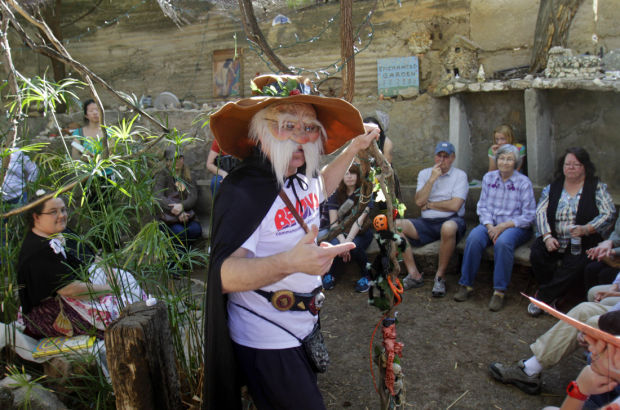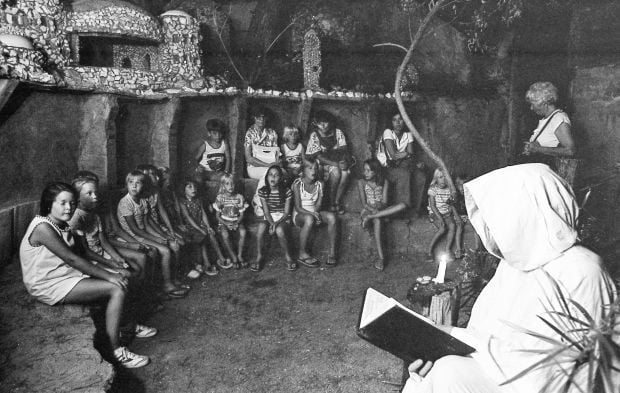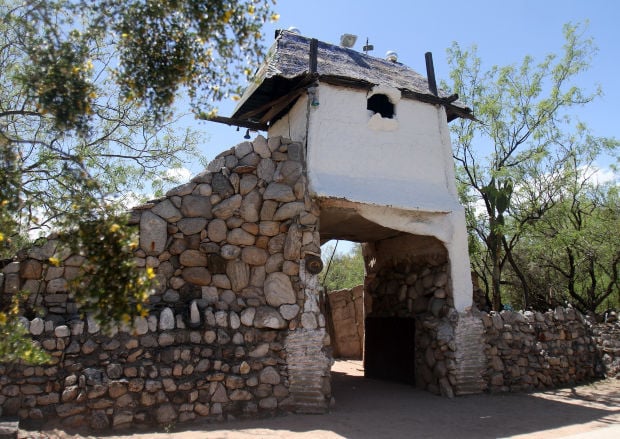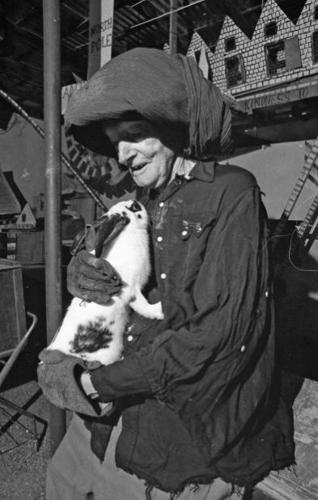Valley of the Moon may become Tucson’s sixth local historic landmark.
At least that’s what Valley of the Moon’s Board of Directors and The Tucson Historic Preservation Foundation are hoping will happen, so volunteers will have outside guidance on how to repair and restore some of the fantasy land’s structures.
It’s been nearly 20 years since the city last granted Historic Landmark designation, a status that protects properties from development and places restrictions on construction. El Tiradito Wishing Shrine downtown was the last location named, back in 1995.
Valley of the Moon sits on what was once the outskirts of Tucson at 2544 E. Allen Road, near East Prince Road and North Tucson Boulevard. Built mainly from concrete and rock in 1932 by George Phar Legler, the property was once a destination for visitors who came for tours.
“It’s quirky, imaginative and absolutely unique,” said Zack Jarrett, president of the Valley of the Moon Board of Directors. “It’s been enchanting children since 1932.”
Today, the front half is now home to sculptures that used to be housed at Magic Carpet Golf until it closed in 2008. The back half of the 2.3-acre property houses concrete and brick storybook structures. A wizard’s tower overlooks a stage used for performances, and winding paths filled with fairy houses lead to an enchanted garden filled with fairy figurines and a pond.
Volunteers continue to give tours the first Saturday of every month, and the property hosts a yearly spring performance and a Halloween show.
However, Valley of the Moon is in need of restorations and improvements. So far, all projects, such as restoration of two ponds and caves underneath, have been done by volunteers.
Now volunteers are asking for local historic-designation status, so that any future restoration projects will be reviewed by the city beforehand. The board fears that volunteers will harm the historic nature of Valley of the Moon in an attempt to preserve it, said Jarrett.
The 83-year-old property is already recognized as a state and national historic landmark. However, the current designations don’t offer the same protections as local historic status.
Local historic status is granted to sites or structures that meet the eligibility requirements for the National Register of Historic Places and feature original structures that promote Tucson heritage.
The board wants to be rezoned as a local historic landmark because of the stricter regulations that come with the distinction, said Jarrett. “The status protects us from ourselves.”
Any significant alterations to the exteriors of designated landmarks must go through a design-review process with the Tucson-Pima County Plans Review subcommittee, said Jonathan Mabry, Tucson’s historic preservation officer.
Historic landmark status also safeguards the property from future demolition or development should The George Phar Legler Society, the nonprofit that owns and maintains Valley of the Moon, ever fail.
Tucson-designated historic landmarks can only be demolished if there is an imminent safety hazard or if the property owner has demonstrated there is no reasonable economic use, and only after a public hearing and approval of the mayor and City Council.
“Tucson has lost a lot of cultural heritage sites, and I think people are realizing that we need to do what we can to save them,” said Jarrett.
Landmark status is the only practical way to protect Valley of the Moon, said Demion Clinco, president of the Tucson Historic Preservation Foundation.
The foundation has been working with the Valley of the Moon board since the rezoning process began in 2010.
“There’s no place like it in the country,” said Clinco. “What the fundamental core issue is, is protecting our city’s historical heritage.”
It’s been 20 years since the city last granted historic landmark status because the process had been arduous, said Mabry. The city streamlined it in 2014 with the hope that by making the procedure easier, more property owners would choose to have their properties designated as local historic landmarks.
Valley of the Moon is the first property to seek historic landmark status through the new process.
“If this isn’t successful, I just don’t see other historic landmarks happening,” said Clinco.







